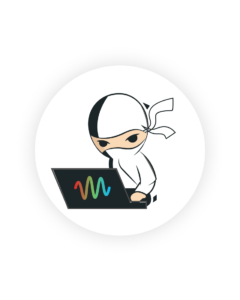
Feb 24, 2023
4 Microsoft Dynamics Integrations to Improve Customer Service in 2023
IntegrationsSupport Ticketing Systempredict escalationsMicrosoft Dynamics
The digital consumer expects seamless interactions with brands, no matter what channel they’re on. To create the experiences their customers want, brands need total visibility into the omnichannel customer journey. But 90% of companies say their existing systems for tracking customer journeys need improvement.
Each customer interaction offers valuable data about the support experience, and integrating your support tool stack with your customer relationship management system (CRM) is the key to unlocking those insights. Microsoft Dynamics 365’s CRM is compatible with hundreds of business applications that optimize your customer service operations so your team can provide the best support experience possible.
Let’s go over four of the best Microsoft Dynamics integrations to supercharge your customer support workflow.
1. Five9: Harness intelligent contact center functionalities
Business applications offer huge volumes of customer data to support teams, but agents often have to dig through customer records to find the information they need. Whether they’re navigating between different systems or asking their teammates for help, agents end up spending valuable time hunting down information that customers expect them to know already.
Five9 offers an omnichannel contact center solution that grows with your customer base and integrates directly with your Microsoft Dynamics 365 CRM for complete visibility into every customer profile. The Five9 Adapter integrates contact center controls with Microsoft Dynamics to create a single user interface that allows agents to capture, view, and manage interactions throughout the customer journey.
Features like cold and warm transfers and click-to-call are available directly within Microsoft Dynamics so support agents can connect with customers without switching between different apps. The add-on automatically matches Five9 customer data to any Microsoft record type so your team always has the latest updates about customer communications.
During every interaction, agents can see real-time customer data in “screen pops” right inside Microsoft Dynamics. With a complete picture of each customer, including their behavior and history with the company, agents can provide a personalized support experience on any channel.
Plus, Five9 can connect to other Microsoft products like Microsoft Teams so support agents can easily loop in other teammates in the same conversation with a customer. This integration makes it simple for agents to connect with other departments, like product and engineering teams, and provide more specialized support as needed.
2. SupportLogic: Deliver proactive customer support
If you wait until your customers tell you they’re unhappy, it’s likely too late to try to fix whatever led them to feel that way. Over 80% of consumers surveyed want businesses to proactively reach out to offer support before they face an issue.
To offer the proactive support that consumers expect, you need to extract signals like customer sentiment that enable you to improve the support experience in real time, not after the case has been resolved. SupportLogic SX uses AI and natural language processing (NLP) to analyze every customer interaction, create a 360-degree view of a customer’s case history previous support interactions, and predict how they feel about their support experience.
SupportLogic’s integration layers on top of your existing Microsoft Dynamics environment and extracts the unstructured support data from your CRM. No rip and replace or migration is required – the bi-directional connector allows you to manage your support cases and customer data in one place. When SupportLogic’s platform predicts case escalations, support agents receive alerts so they can address the problem before it becomes a crisis.
The SupportLogic SX dashboard allows support managers to review open cases, customer sentiment and attention scores, and other details to identify high-priority cases and intervene sooner rather than later. This streamlined workflow makes your support operations more efficient so you can focus on high-level tasks like agent coaching and reducing case backlog.
3. LogMeIn Rescue: Provide real-time guided assistance to customers
Many support agents have been in this situation: a customer contacts support with a problem, and when the support agent gives instructions for resolving the issue, the customer doesn’t know what to click. The agent tries to explain further, only for the customer to become even more frustrated when they end up on the wrong page.
Rescue by LogMeIn enables agents to see what’s on their customers’ screens and provide real-time guided assistance on any operating system. Support agents use Rescue to start co-browsing sessions where they can see what the customer sees on any website and help them complete digital tasks, like changing account settings, navigating a website, or filling out complex forms.
Rescue’s Microsoft Dynamics integration allows agents to launch remote support sessions from the omnichannel agent dashboard in Microsoft Dynamics 365. During co-browsing sessions, agents and customers share control over the page so agents can show customers exactly how to resolve their issues. Features like annotations and text highlighting make it easy for agents to guide customers to navigate a website or complete specific actions.
Scripts enable support agents to automate common tasks on the customer’s device, like accessing a specific webpage or launching disk cleanup, with just one click. Managers can configure these scripts to run automatically as soon as the session begins to speed up resolution times further.
The integration automatically syncs all customer and session data in Microsoft Dynamics so support agents have all the context they need for every customer interaction. Additionally, agents can start voice chats or two-way video calls from within Microsoft Dynamics to provide customers with a more personal, interactive support experience.
4. Inogic Kanban Board: Improve productivity with card-based views
At any given moment, support agents handle dozens or even hundreds of cases simultaneously. Whether they’re waiting for a customer to respond or following up to see if the issue has been resolved, agents need to stay on top of every case or risk letting them fall through the cracks, which can lead to case escalations and frustrated customers.
Inogic Kanban Board displays any CRM record as compact movable cards to streamline agent productivity. Support agents can use the kanban view to check the status of any case at a glance and drag and drop the cards to update them quickly.
The Microsoft Dynamics integration allows you to visualize any existing CRM view as user-friendly rows and “lanes” rather than a static tabular format. Agents can categorize and group records based on any field value, like status or priority. They can also sort cases in each lane by case title, number, type, and origin or filter them by date so they don’t have to search for cases manually.
Managers can create custom workflows that allow agents to easily categorize cases as they progress. They can also define quick activity actions on each card so agents can send emails, make phone calls, or schedule appointments directly within the kanban view.
Take Your Microsoft Dynamics Integrations to the Next Level
With the right Microsoft Dynamics integrations, support teams will spend less time hunting down customer data so they can focus on providing the best support experience possible. SupportLogic integrates with Microsoft Dynamics so you can uncover the customer signals in your CRM data and act quickly on these insights.
To get the most out of your existing tool stack, check out our guide to integrating SupportLogic with your CRM.
Don’t miss out
Want the latest B2B Support, AI and ML blogs delivered straight to your inbox?





